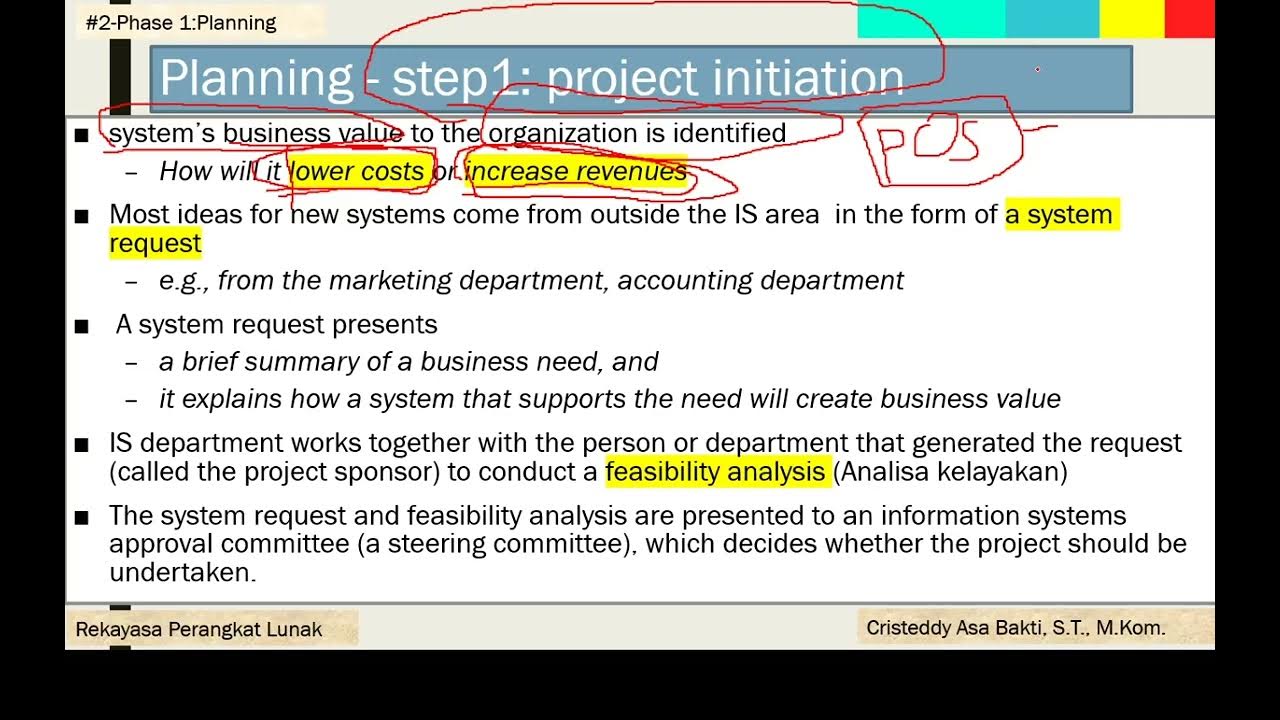Elon Musk's 5 step process for making things in a better way
Summary
TLDRThe speaker outlines a rigorous five-step process for improving project requirements and workflows. The steps include making requirements less rigid, deleting unnecessary processes, simplifying or optimizing existing elements, accelerating cycle times when needed, and finally automating tasks. Emphasizing the importance of questioning initial requirements, the speaker warns against the tendency to add components without justification. The process advocates for a critical evaluation of each step to avoid common pitfalls in project management, particularly the mistake of optimizing non-essential elements before establishing a solid foundation.
Takeaways
- 😀 Always question the validity of your requirements, regardless of their source.
- 🤔 Avoid treating requirements as infallible; even intelligent sources can be wrong.
- 🗑️ Regularly evaluate and delete unnecessary steps in your processes.
- 🔍 If you're not deleting at least 10% of your processes, you might be holding onto excess.
- ⚙️ Focus on optimizing processes that truly matter rather than optimizing unnecessary components.
- ⏩ Only speed up your workflow after refining your processes to avoid exacerbating issues.
- 🔄 Prioritize simplification or optimization before moving on to acceleration.
- 🛠️ Ensure foundational quality is established before automating processes.
- 🚀 Don't rush to automate; first confirm that your processes are effective and streamlined.
- ⚠️ Learn from past mistakes to avoid repeating them in future implementations.
Q & A
What is the first step in the five-step process discussed?
-The first step is to make your requirements less dumb. This involves critically evaluating and questioning the requirements given to you, regardless of the source.
Why is it particularly dangerous if a smart person provides the requirements?
-It's dangerous because you might take their requirements as absolute truth and not question them enough, leading to potential flaws in your approach.
What is the second step in the process?
-The second step is to delete the part or process that is unnecessary. If you're not actively adding things back in at least 10% of the time, it indicates you are not deleting enough.
What common bias does the speaker mention regarding process steps?
-The speaker notes a common bias towards adding more parts or process steps instead of deleting unnecessary ones, as people tend to justify additions.
What should be the focus of the third step?
-The third step focuses on simplifying or optimizing the process. It’s crucial to optimize things that are essential rather than optimizing something that should not exist.
What does the fourth step, 'accelerate cycle time,' entail?
-The fourth step involves speeding up the process only after addressing the first three steps. If you're moving too slowly, you should go faster, but not before ensuring the previous steps are correctly implemented.
What is the final step in the process?
-The final step is to automate the process. However, it's important to ensure that the previous steps have been addressed before automating.
What mistake did the speaker admit to making?
-The speaker admitted to making the mistake of reversing the order of the steps by automating, accelerating, and simplifying before properly deleting unnecessary components.
Why is it important to evaluate your requirements constantly?
-Constant evaluation of your requirements is essential because assumptions can lead to ineffective processes and hinder progress.
How can one ensure they are effectively deleting unnecessary processes?
-One can ensure effective deletion by tracking how often they find themselves needing to add components back into the process; if this happens less than 10% of the time, it may indicate insufficient deletions.
Outlines

Dieser Bereich ist nur für Premium-Benutzer verfügbar. Bitte führen Sie ein Upgrade durch, um auf diesen Abschnitt zuzugreifen.
Upgrade durchführenMindmap

Dieser Bereich ist nur für Premium-Benutzer verfügbar. Bitte führen Sie ein Upgrade durch, um auf diesen Abschnitt zuzugreifen.
Upgrade durchführenKeywords

Dieser Bereich ist nur für Premium-Benutzer verfügbar. Bitte führen Sie ein Upgrade durch, um auf diesen Abschnitt zuzugreifen.
Upgrade durchführenHighlights

Dieser Bereich ist nur für Premium-Benutzer verfügbar. Bitte führen Sie ein Upgrade durch, um auf diesen Abschnitt zuzugreifen.
Upgrade durchführenTranscripts

Dieser Bereich ist nur für Premium-Benutzer verfügbar. Bitte führen Sie ein Upgrade durch, um auf diesen Abschnitt zuzugreifen.
Upgrade durchführenWeitere ähnliche Videos ansehen

BIM Contracting Software - supporting Level of Information Need + ISO 19650 compliance (Part 3 of 3)

Elon Musk Five Step Improvement Process

Systems Analysis & Design - Ch 1 - Project Initation

NEW ChatGPT Projects Full Guide! (Amazing Results)

Fase 1 Pengembangan Sistem: Planing (Perencanaan)

Setting Information Requirements the Right Way (No More Guesswork!) - Training Course Part 2
5.0 / 5 (0 votes)
